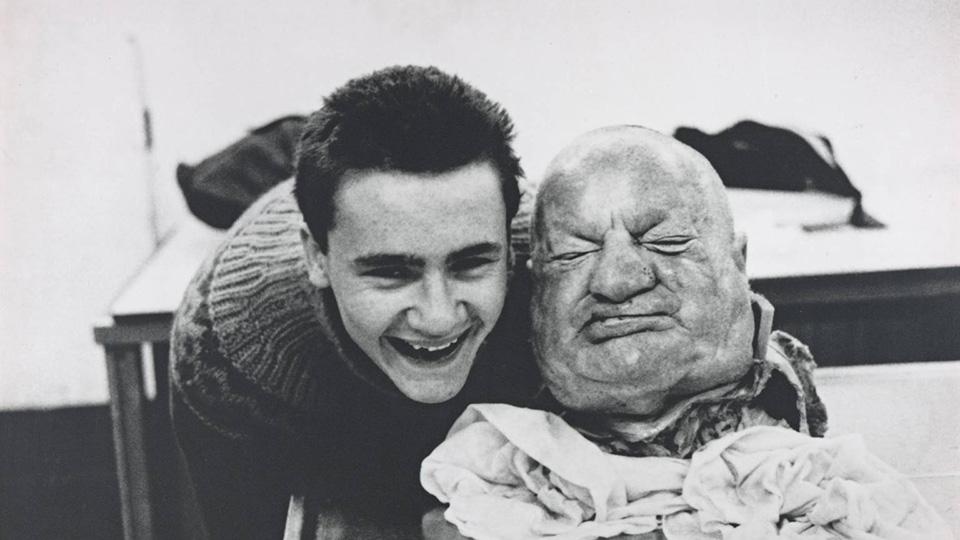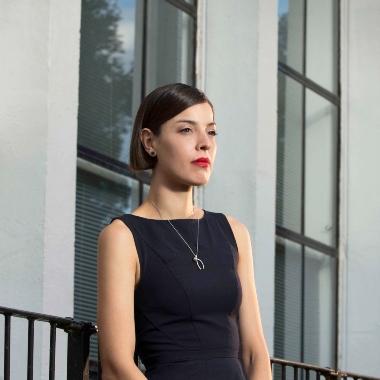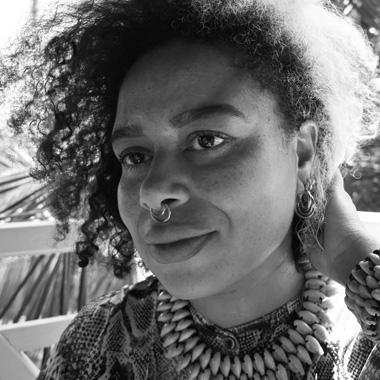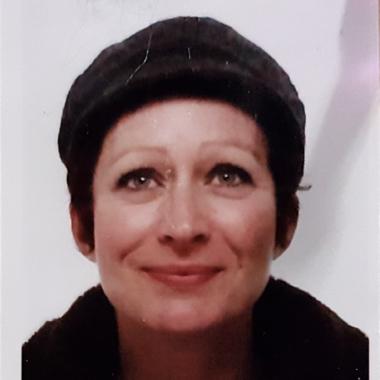Damien Hirst
Britain’s most successful artist studied Fine Art at Goldsmiths in the late 1980s, alongside many other young British artists (YBAs).
Main details
More than 463,000 people visited the Damien Hirst exhibition last year at the Tate Modern, making it the most successful solo show for the gallery. The works on display included several pieces dating back to the late 1980s, when Damien was studying for his BA in Fine Art at Goldsmiths.
Current Head of the Department of Art, Dr Richard Noble, recently met with Hirst to talk about his time at Goldsmiths, his fellow artists and their role in redefining the British art scene at the time:
Why did you choose to come to Goldsmiths?
I moved down to London with some friends, and that was when I worked out that really I only wanted to go to Goldsmiths. Goldsmiths’ Fine Art course was the only place where you didn’t have to choose between painting and sculpture. I just thought, ‘I want to do both’.
And when you got to Goldsmiths, what were your initial impressions of the place?
It was really different to anywhere else – they treated you like artists. They just said, ‘you’re artists, you’re not students – get on with it’. They didn’t push you around; if you wanted a tutorial, you had to ask for one. It was up to you. I got into a load of trouble on my Foundation course [in Leeds], like I did at school. Once I got to Goldsmiths I was taken much more seriously.
They were great times. On my first day I met Angus Fairhurst, Mat Collishaw, Simon Pattison – all in my year. Gary Hume was there too, and Sarah Lucas was in the year above me. I remember Sarah was the link to everything because she was going out with Grenville Davey. So he was coming into the bar, this artist that had been at the College and who had recently got famous. And then you’d bump into Julian Opie and Lisa Milroy. You thought: ‘Oh my God, it’s a real connection to the art world’.
How did your work evolve while you were here?
I didn’t really know what I was doing at first. I remember in my first year I saw [tutor] Basil Beattie. I was doing these collages and he said I shouldn’t really be here if that’s what I was doing. I realised that they were a bit nostalgic and retro, so I ended up breaking them all up and sweeping them into a pile and having a few tutorials talking about the pile. I think my ‘spot’ paintings came out of that. I just sort of rid myself of it all and started again.
And the Pop thing? One often hears of you in connection to Jeff Koons.
At Goldsmiths I thought the tutors were absolutely so cool and brilliant and amazing, and then the show New York Art Now at the Saatchi Gallery opened. I went there and it blew me away – I totally loved it. And then all the tutors at Goldsmiths said it was shit. That was the first time I disagreed with the tutors.

So what inspired you to organise Freeze? It must have been a hugely ambitious thing for a second-year student to take on.
When I got to Goldsmiths I worked at Anthony d’Offay Gallery. I was hanging and wrapping up Carl Andre’s work, and watching Anthony sell work through the little viewfinder. I was doing two and a half days a week at d’Offay and then going back to Goldsmiths. I thought: ‘My God, the work going on here is better than or at least as good as a lot of the work at d’Offay’. You know, it was finished, it was complete. So then I thought: ‘You should do that, you just have to get a building.’
Retrospectively Freeze was so important to the British art world – it was a landmark moment because your whole generation came out of it.
I think there were other things happening. I think there was a bit of frustration. With the art world the way it was there were likely to be only three artists, if that, ‘making it’ each year. There was also that pressure from the College – good pressure – saying ‘you need an audience’, basically. Don’t wait for one; don’t put your paintings in the corner of the studio and wait for someone to buy them when you’re dead.
One of the striking things about your career, aside from your success as an artist, is the sheer range of stuff that you’ve done: curating exhibitions, designing magazines, making films, building restaurants. How does that relate to your education; to being in art school?
Before I went to Goldsmiths I used to think I was a Jack of all trades: so many ideas and so many different directions. What really helped me was doing group shows like Freeze. Once I started arranging other people’s work in a white room, I could just do that with my own work. I could separate each individual piece so they didn’t spill over into each other.
If I’m making a painting and I’m not sure if it is any good or not, I always imagine leaving it outside in the pub and thinking if no one takes it home it’s crap. That was what I was thinking with the spot painting; you couldn’t leave that in the skip if you walked past it, you’d have to get it out and take it home.
Being in art school empowers you to do your own thing. When I left my Foundation course I didn’t know what I wanted to do and then as soon as I arrived at Goldsmiths I knew it was where I needed to be. It was absolutely the right place; there was nowhere else I could have gone where I could have done what I wanted to do.
Your son recently got a place here and you visited the campus, didn’t you?
You know when I went in [to the main building] I couldn’t believe it. I hadn’t been back for about 23 years. I went into the canteen and it was identical. I mean, obviously the tables had changed but everything was in the same place. A kid in the corridor came up to me and said, ‘I’ve just been studying you’. And I was like (gulps). It was so freaky. So weird.

.jpg)

